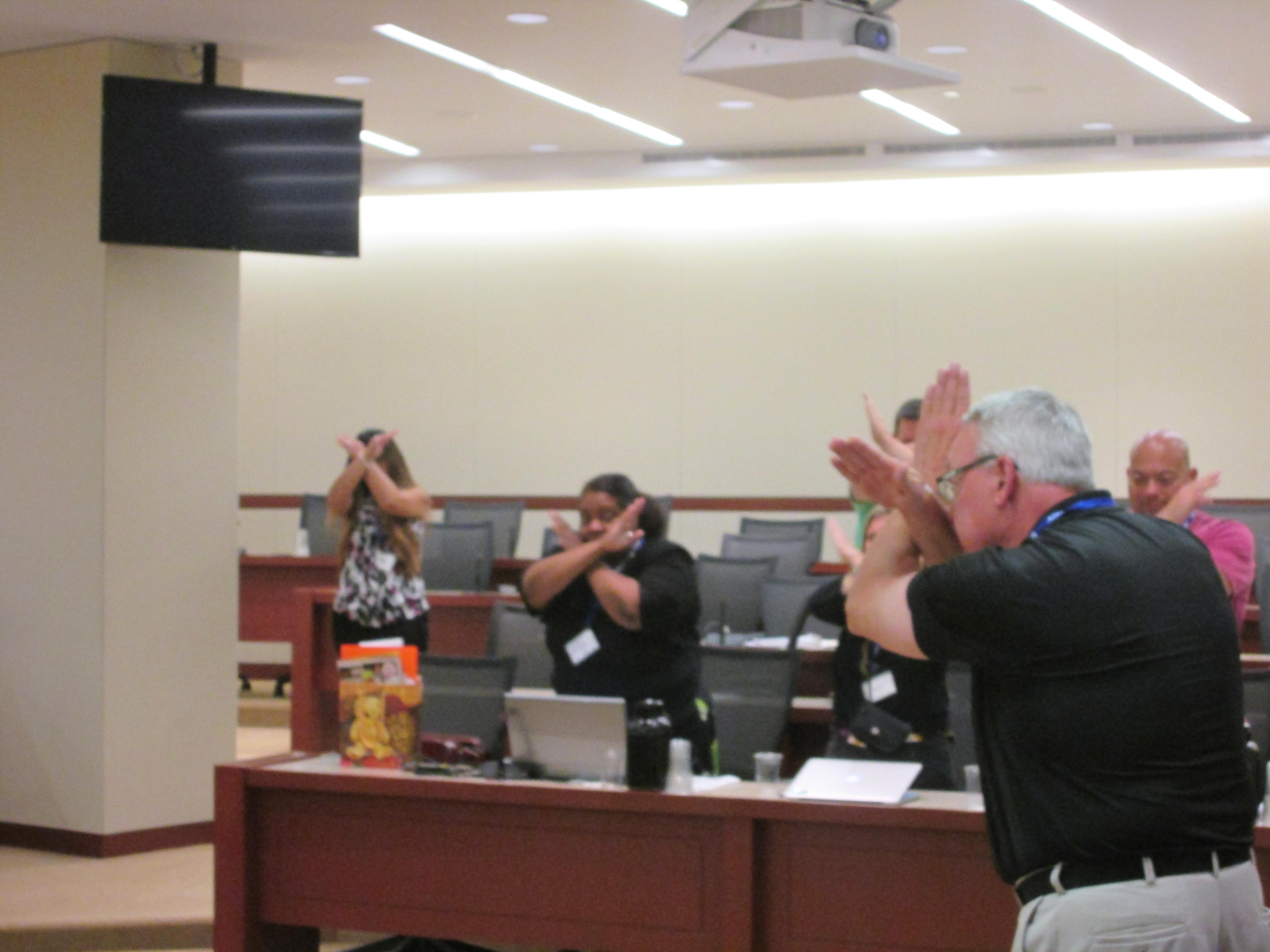Teach-the-Teachers: Economics Dancing in Chicago
Tom McCormick (left) and Andrew Gibson participate in a vocabulary picture drawing activity.
AIER’s Teach-the-Teachers Initiative continues its way around the country. We encourage teachers to incorporate economics into their classroom teaching plans, using creative methods that will inspire students to engage with the lesson.
During the week of July 11, 2016, AIER conducted a for-credit professional development workshop at the Federal Reserve Bank of Chicago. Twenty-nine teachers from Missouri and Illinois, including a large representation from the Chicago metropolitan area, participated in the program. We were excited to have teachers from a wide spectrum of fields, from math, business and financial literacy to health, graphic design, drafting, and construction, just to name just a few.
We piloted this program in the Berkshire County, Massachusetts, over the last two years, where we introduced lesson demonstrations, simulations, and role-play. An important goal of the program is to showcase creative teaching techniques.
We were blown away by the creativity of teachers from the pilot program as they integrated those innovative methods and economic concepts into their classes. You can check out their ideas, such as functions of money in Spanish class; the Consumer Price Index in math class; inflation in business and in history classes; an unemployment survey in statistics class; budgeting and fiscal policy in government classes; and economic vocabulary and unemployment rate in the ESL and special education class.
This year we are taking the concept of student engagement further: We want to get high school students up from their seats and interacting with their peers. So we asked the Chicago workshop participants for their ideas. Of course, the teachers knew a way: “Economics dances.” This idea is most certainly creative, although it isn’t new; you can find some good examples on YouTube.
The dance moves are related to economic concepts. If you do not know the definition of a concept, you will mess up the movement. For example, in the picture below, William Meder, a teacher from Thornton Township High School 205 of Illinois, is showing the “equilibrium” move. You start with showing the upward sloping supply curve with your left hand, and then add the downward sloping demand curve with your right hand. You will find yourself showing the market equilibrium at the intersection of supply and demand – in other words, by crossing your hands in front of you. The dance proceeds with an increasing speed, and everyone has fun messing up and correcting each other.
Overall, the teachers in Chicago were pleased with what they learned and accomplished. One participant sent me a note saying, “The students at my school are the real beneficiaries of my enrollment in the AIER program… as the idea I presented on the third day of the workshop will be further developed.” And maybe they will dance it!
William Meder from Thornton Township High School 205 of Illinois is showing the “equilibrium” move.
Click here to sign up for the Daily Economy weekly digest!









